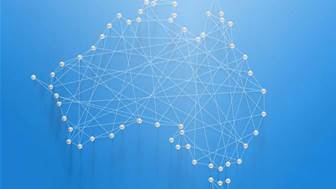Agriculture is arguably the world’s most vital industries. And as any farmer can attest, it’s also one of the world’s toughest.
Farmers face any number of threats on a daily basis—from climate deviations to water shortages to pests and more—any one of which can have catastrophic impacts. And with an ever-increasing population vying for finite resources, making agriculture more predictable, sustainable, and productive is critical to ensuring ample and nutritious food production for future generations.
The upcoming IOT in Action event in Sydney (register here to attend the event) will provide an opportunity to learn how the Internet of Things (IoT) is transforming agriculture by helping farmers solve their most vexing challenges.
How IoT is redefining agriculture
Imagine a map of the world’s farms, with data overlays to track soil temperature, nutrients, and water saturation. Now imagine applying pesticides and fertilisers with precision and targeting seed varieties to different parts of a single farm based on growth patterns.
That and more is what IoT for agriculture offers. By the year 2020, the number of IoT devices for agriculture use is projected at 75 million.
Microsoft Project FarmBeats is an artificial intelligence (AI) and IoT platform that is helping farmers to increase yields, improve quality, and drive efficiencies—all while reducing costs and resource consumption.
Project FarmBeats uses data from sensors and drones to proactively monitor areas, such as soil moisture and pH, feed supply, and environmental conditions to enable precision interventions, predict optimal planting and harvesting times, and mitigate potential threats. The use of drone footage reduces the number of sensors required, making the solution more cost effective. Project FarmBeats uses AI and machine learning techniques to interpret and combine drone footage with in-ground sensors to deliver insights.
Project FarmBeats also addresses problems unique to rural areas, where broadband speeds and Wi-Fi are frequently a challenge. To solve for this, Project FarmBeats uses TV whitespaces—essentially unused TV channels. By overlaying Wi-Fi signals over these channels, farms can tap up to several 100 Mbps of unused capacity and transport data from sensors, drones, cameras, and tractors, back to the farmer’s home. From the farmer’s home, PCs do the bulk of the compute work and then transmit data to the cloud, even when the farmer’s house does not have a fast broadband connection.
IoT transforming agriculture in Australia and New Zealand
Craig Blackburn’s 400-hectare farm is home to some 2,100 head of cattle and 800 sheep, with 70 hectares devoted to feed crops. Keeping a close eye on crops, animals, weather, and water is vital to the farm’s success.
With SCADAfarm, a solution that integrates Microsoft Azure Hub IoT services with Schneider Electric software and hardware, Blackburn has simplified his operation. From his phone, he can monitor and operate irrigators and pumps; customise sprinklers, soil types, and moisture levels; and incorporate real-time climate data from the farm’s weather station.
Since implementing SCADAfarm, Blackburn says he hasn’t looked back and credits IoT with substantial water savings, greater efficiency, and increased crop yields.
In Tasmania, the government is working with ag-tech business The Yield on an IoT solution designed to help oyster farmers predict and adapt to threats from Mother Nature, ranging from disease to climate to water quality.
The system uses in-estuary sensors, cloud computing, and machine learning to collect and process data to enable better decisions and minimise health risks and financial impacts. Sensors help to identify contamination threats and water temperature to assess risk of disease. They can also use weather data to plan harvest times more accurately and minimise lost revenue.
Register for IoT in Action: Sydney on March 19, 2019
Attend the IoT in Action global event in Sydney to learn how agriculture and other industries are unlocking the potential of intelligent edge and intelligent cloud solutions. It’s an excellent opportunity for partners and business and technical decision makers to deepen partnerships and gain actionable insights around the latest topics in IoT business transformation, innovations in IoT security, the intelligent edge, and more.
Ranveer Chandra is Chief Scientist, Azure Global at Microsoft.
1. Shubhi Mittal, “IoT Ecosystem: How the IoT Market will Explode by 2020,” found at: https://blog.beaconstac.com/2016/03/iot-ecosystem-iot-business-opportunities-and-forecasts-for-the-iot-market/, accessed Feb 5, 2019.








